#Sigilmassasaurus
Text


just two creatures standing around facing left
#my art#paleostream#paleoart#flocking#maiasaura#sigilmassasaurus#had to dip early bc my dogs demanded attention so you jsut get 2#dinosaurs
693 notes
·
View notes
Text




Flocking 5/10/24 -- Maiasaura + Sigilmassasaurus + Boreaspis + Gigantopithecus
#paleostream#paleoblr#dinosaurs#maiasaura#paleoart#sigilmassasaurus#gigantopithecus#boreaspis#procreate#digital
403 notes
·
View notes
Text

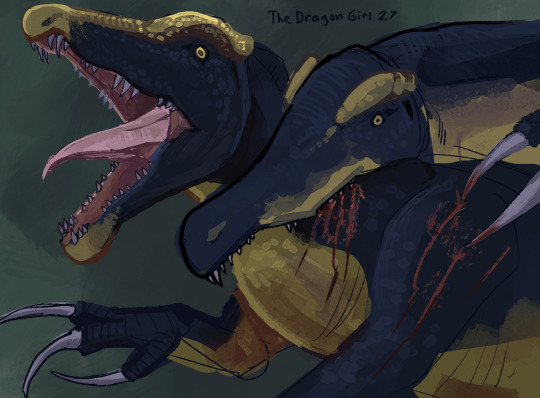

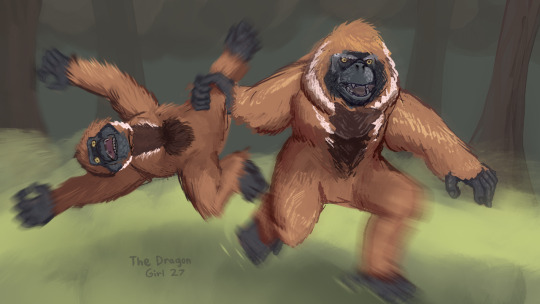
Flocking doodles
Maiasaura watching over her hatchlings
Sigilmassasaurus fighting for territory
Boreaspis swimmin round
Gigantopithecus yeeting another Gigantopithecus to assert dominance
#paleoart#paleostream#dinosaur#hadrosaur#Maiasaura#Sigilmassasaurus#spinosaurus#theropod#Boreaspis#fish#Gigantopithecus#primates#mammal#paleozoic#mesozoic#cenozoic#dragon draws creatures#yes the Gigantopithecus is based on the image of a gorilla yeeting another gorilla#fun fact Gigantopithecus was my suggestion for what to draw mostly because i wanted to draw a funny monkee and it won the vote lol#so everyone who complained about having to draw a monkee has me to blame#and also everyone else who voted for it lol#also while drawing it i played donkey kong music in the background cuz whynot#and i descovered the secret emotion that is drawing a monkee with jungle hijinks playing in the background#would reccomend
343 notes
·
View notes
Text
Paleostream 11/05/2024
here are today's #Paleostream sketches!!!
today we drew Maiasaura, Sigilmassasaurus, Boreaspis, and Gigantopithecus
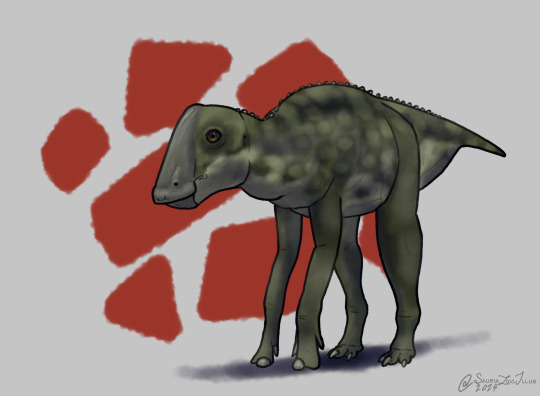
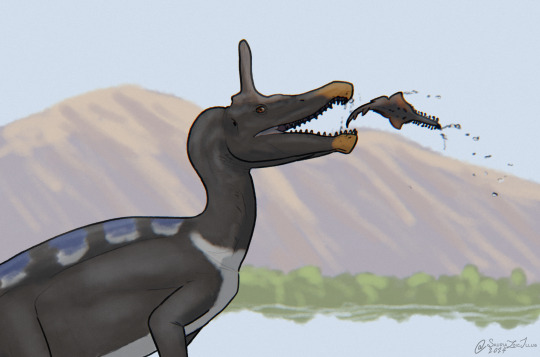
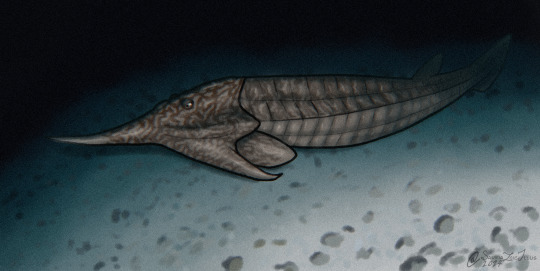

#Paleostream#paleoart#paleontology#digital art#artists on tumblr#digital artwork#palaeoart#digital illustration#sciart#id in alt text#dinosaur#dinosaur art#baby dinosaurs#jawless fish#fish art#extinct fish art#primates#ape#monkey art#Maiasaura#Sigilmassasaurus#Boreaspis#Gigantopithecus
166 notes
·
View notes
Text

Flocking Together
Maiasaura
Sigilmassasaurus
Boreaspis
Gigantopithecus
#paleoart#prehistory#paleostream#maiasaura#sigilmassasaurus#boreaspis#gigantopithecus#palaeoblr#made with krita
79 notes
·
View notes
Text
My favorite tiktok I’ve made in a while lol
#spinosaurus#spinosauridae#oxalaia#sigilmassasaurus#siamosaurus#paleontology#paleoart#dinosaur#dino#dinosaur art#my art#my stickers#video#art
84 notes
·
View notes
Text

A rooted dinosaur tooth of an indeterminate spinosaurid, either cf. Spinosaurus sp. or Sigilmassasaurus brevicollis from the Kem Kem Group in Taouz, Morocco. Although the root is in an unsightly condition, the tooth is all natural with no restorations. Unfortunately, it is currently unknown which morphologies belong to which genus, and whether they are diagnostic beyond Spinosaurinae (or Spinosaurini). When considering isolated remains, Spinosaurus (and Sigilmassasaurus) are one of the most common dinosaur remains in the world. The Moroccan specimens of Spinosaurus have sometimes been placed into Spinosaurus maroccanus, a species that has since been synonymized into Spinosaurus aegyptiacus. However, it is not clear if the numerous Moroccan specimens from the Kem Kem Group represent the same species as the Egyptian specimen from the Bahariya Formation that was lost during World War II.
#dinosaur#fossils#paleontology#palaeontology#paleo#palaeo#spinosaurus#sigilmassasaurus#spinosauridae#theropod#cretaceous#mesozoic#prehistoric#science#paleoblr#スピノサウルス#シギルマッササウルス#スピノサウルス科#恐竜#化石#古生物学
23 notes
·
View notes
Text
From the last 2 Friday flocking Paleosteams.
Liopleurodon.
Homo Erectus, yes they are room mates.
Anchiornis mother and chick.
Marambionectes.
Maiasaura sunset.
Sigilmassasaurus taphonomy & shark's.
Boreaspis school.
Gigantopithecus jumping among rock garden's.

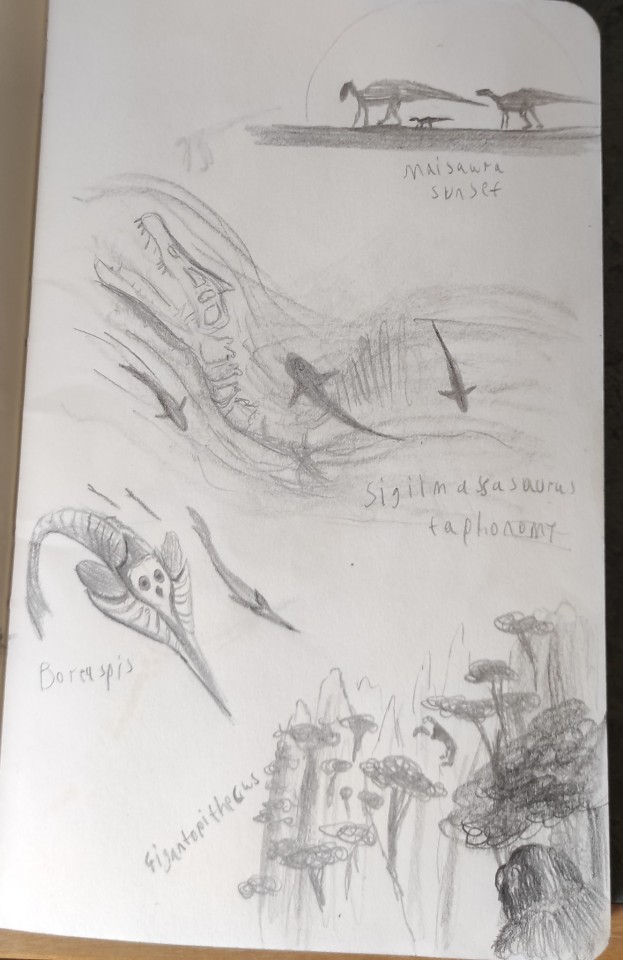
#paleoart#paleontology#dinosaurs#cretaceous#jurassic#liopleurodon#homo erectus#anchiornis#marambionectes#maiasaura#sigilmassasaurus#boreaspis#gigantopithecus#paleostream#taphonomy#extinct species#room mates
18 notes
·
View notes
Text
Here are some smol dinos for you guys!
In order:
Maiasaura
Shantungosaurus
Kosmoceratops
Psittacosaurus
Liopleurodon
Dakoraptor
Sigilmassasaurus

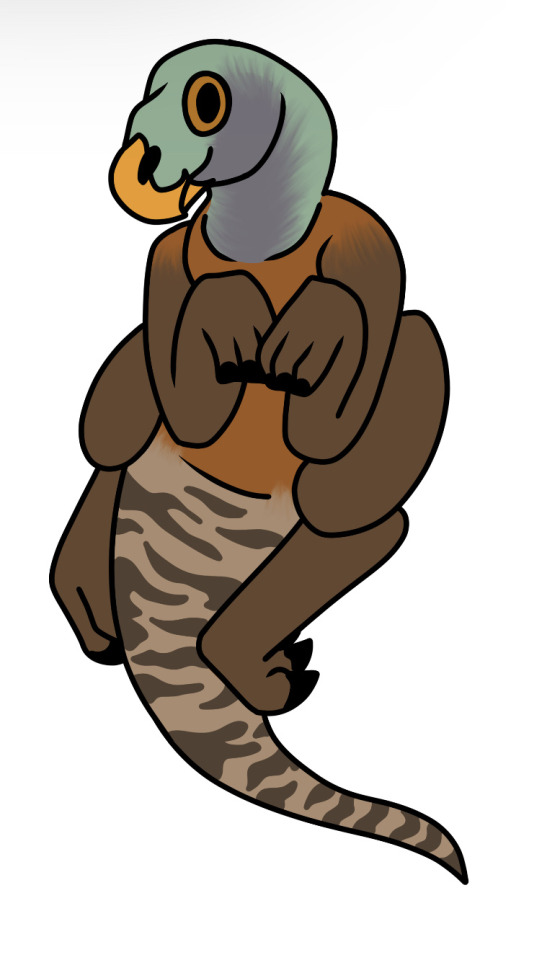


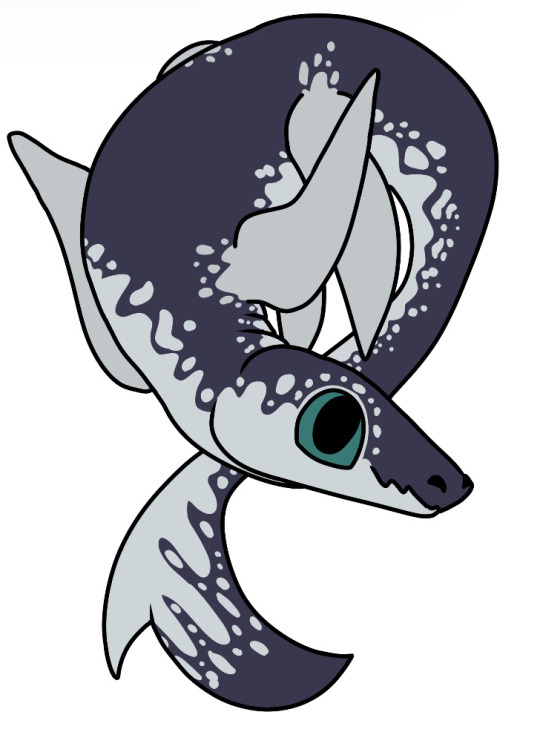

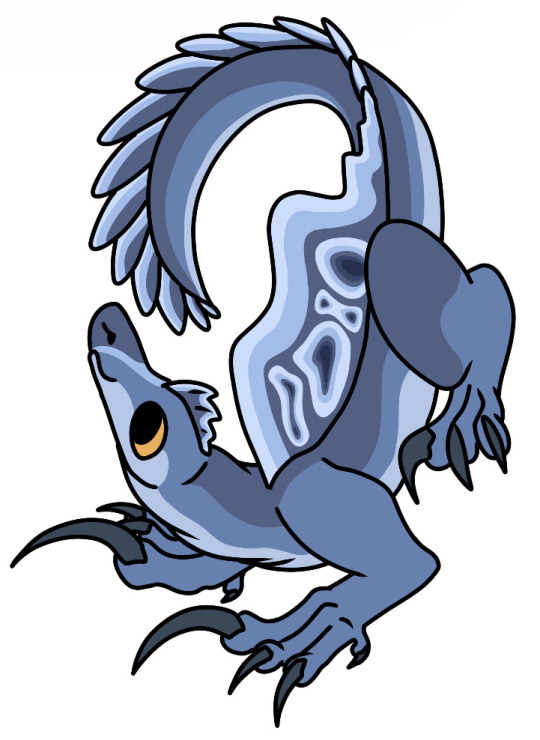
#dinosaur#cute dinosaur#maiasaura#shantungosaurus#kosmoceratops#psittacosaurus#liopleurodon#dakoraptor#sigilmassasaurus#my artwrok#digital art#they are my babies#my art
16 notes
·
View notes
Text


time for more spream
#my art#dinosaur#paleo#paleoart#paleo art#paleostream#Gerrothorax#vagaceratops#lyviathan#europasaurus#yuanchuavis#nyctosaurus#sigilmassasaurus#thylacoleo
17 notes
·
View notes
Text




Results from the Flocking #paleostream! Maiasaura, Sigilmassasaurus, Boreaspis and Gigantopithecus.
265 notes
·
View notes
Text




Doodles from today's flocking paleostream featuring Maiasaura, Sigilmassasaurus, Boreaspis, and Gigantopithecus.
171 notes
·
View notes
Text

Participated on the paleostream flocking yesterday!
....I only did one drawing though,so enjoy this Sigilmassasaurus
2 notes
·
View notes
Text



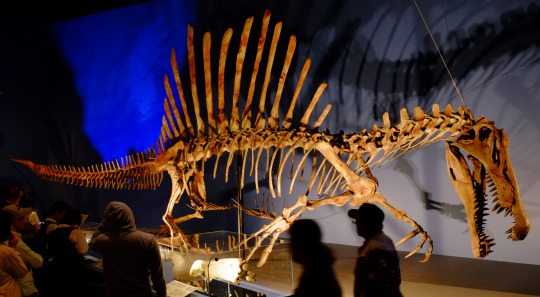
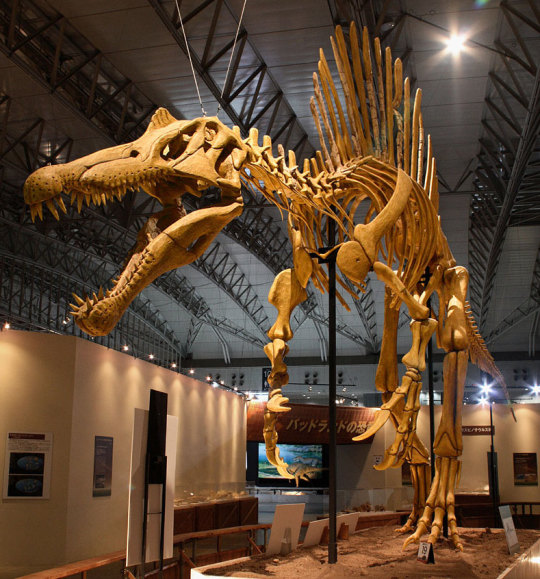
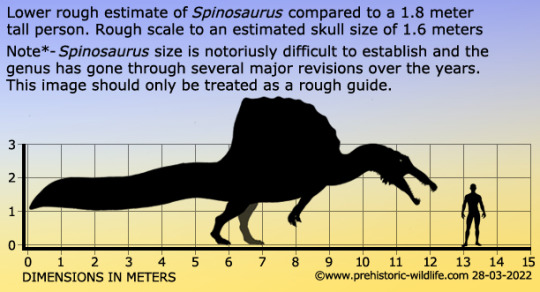
Spinosaurus
(temporal range: 99-93.5 mio. years ago)
[text from the Wikipedia article, see also link above]
Spinosaurus (/ˌspaɪnəˈsɔːrəs/; lit. 'spine lizard') is a genus of spinosaurid dinosaur that lived in what now is North Africa during the Cenomanian to upper Turonian stages of the Late Cretaceous period, about 99 to 93.5 million years ago.[2][3] The genus was known first from Egyptian remains discovered in 1912 and described by German palaeontologist Ernst Stromer in 1915. The original remains were destroyed in World War II, but additional material came to light in the early 21st century. It is unclear whether one or two species are represented in the fossils reported in the scientific literature. The best known species is S. aegyptiacus from Egypt, although a potential second species, S. maroccanus, has been recovered from Morocco. The contemporary spinosaurid genus Sigilmassasaurus has also been synonymized by some authors with S. aegyptiacus, though other researchers propose it to be a distinct taxon. Another possible junior synonym is Oxalaia from the Alcântara Formation in Brazil.
Spinosaurus is the longest known terrestrial carnivore; other large carnivores comparable to Spinosaurus include theropods such as Tyrannosaurus, Giganotosaurus and Carcharodontosaurus. The most recent study suggests that previous body size estimates are overestimated, and that S. aegyptiacus reached 14 metres (46 ft) in length and 7.4 metric tons (8.2 short tons) in body mass.[4] The skull of Spinosaurus was long, low, and narrow, similar to that of a modern crocodilian, and bore straight conical teeth with no serrations. It would have had large, robust forelimbs bearing three-fingered hands, with an enlarged claw on the first digit. The distinctive neural spines of Spinosaurus, which were long extensions of the vertebrae (or backbones), grew to at least 1.65 meters (5.4 ft) long and were likely to have had skin connecting them, forming a sail-like structure, although some authors have suggested that the spines were covered in fat and formed a hump.[5] The hip bones of Spinosaurus were reduced, and the legs were very short in proportion to the body. Its long and narrow tail was deepened by tall, thin neural spines and elongated chevrons, forming a flexible fin or paddle-like structure.
Spinosaurus is known to have eaten fish, and most scientists believe that it hunted both terrestrial and aquatic prey. Evidence suggests that it was semiaquatic; how capable it was of swimming has been strongly contested. Spinosaurus's leg bones had osteosclerosis (high bone density), allowing for better buoyancy control. Multiple functions have been put forward for the dorsal sail, including thermoregulation and display; either to intimidate rivals or attract mates. It lived in a humid environment of tidal flats and mangrove forests alongside many other dinosaurs, as well as fish, crocodylomorphs, lizards, turtles, pterosaurs, and plesiosaurs.
9 notes
·
View notes
Note
"it won't help anything" but spinosaurus :(
I know but like, all we had of spino in the beginning was the sail, the most having that back would do is fix up whether or not sigilmassasaurus is its own thing,
13 notes
·
View notes
Text
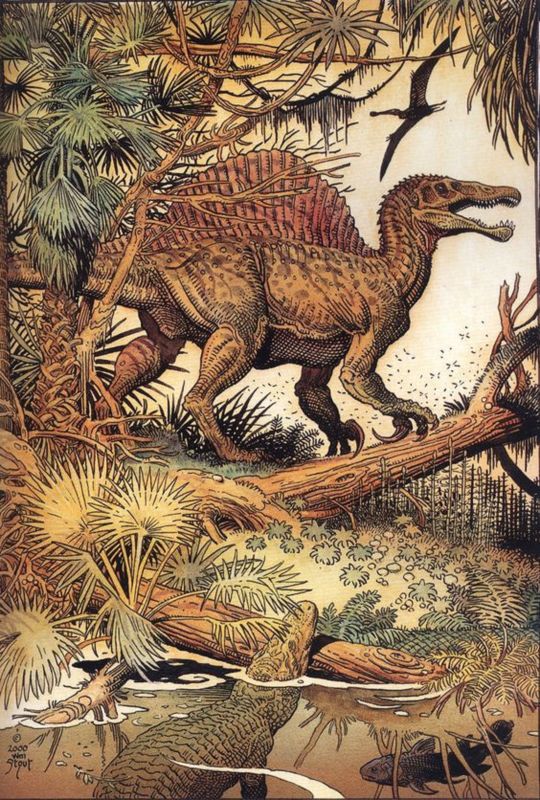
SPY-noh-SOAR-uss -- THE "SPINY LIZARD" OF PRESENT DAY NORTH AFRICA.
PIC INFO: Resolution at 1692x2508 -- Spotlight on Spinosaurus (meaning "spine lizard"), a genus of theropod dinosaur that lived in what now is North Africa during the upper Albian to upper Turonian stages of the Cretaceous period, about 112 to 93.5 million years ago.
The best known species is S. aegyptiacus from Egypt, although a potential second species, S. maroccanus, has been recovered from Morocco. Artwork by William Stout, c. 2000.
Name: Spinosaurus (Spine lizard)
Phonetic: Spine-oh-sore-us.
Named By: Ernst Stromer - 1915.
Synonyms: Sigilmassasaurus?
Classification: Chordata, Reptilia, Dinosauria, Saurischia, Theropoda, ���Megalosauroidea, Spinosauridae, Spinosaurinae.
Species: S. aegyptiacus (type), S. maroccanus is a possible second, although many consider this species as being the same as the type species.
Diet: Piscivore/Carnivore.
Size: Estimates highly variable amongst sources and range anywhere between 12.6 and 18 meters total body length. Skull length estimated between 1.5 and 1.75 meters long.
Known locations: North Africa, particularly Egypt - Bahariya Formation, and Morocco - Kem Kem Beds.
Time period: Albian to Cenomanian of the Cretaceous.
Fossil representation: To date at least six partial specimens of the skull, mandible, neural spines and other fragmentary post cranial remains. Teeth however are considerably more common.
Sources: www.prehistoric-wildlife.com/species/s/spinosaurus.html, www.mindat.org/taxon-4967112.html, & Pinterest.
#Spinosaurus#WilliamStout#DinoArt#Palaeoart#SpinosaurusAegyptiacus#S.aegyptiacus#PalaeoArt#Dinosaur#Theropod#Dinosaurs#LateCretaceous#WilliamStoutArt#Paleoart#DinosaurArt#Spinosaurusaegypticus#Spinosauridae
6 notes
·
View notes